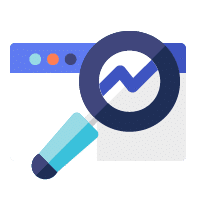Our content marketing and SEO experts have revealed their best tips and actionable insights to help you hone your seo content writing skills and boost your company’s organic growth.
This guide teaches you best practices for both SEO and content to reach untapped audiences, write effective SEO content for search and effectively measure content marketing and SEO success.
After reading this, you’ll be able to:
-Define content marketing and SEO
-Write quality copy that’s SEO ready
-Repurpose old content intelligently for SEO
-Cluster content to maximize your marketing returns
-Measure the success of your content marketing and SEO strategy accurately
Let’s start by defining content marketing and SEO’s relationship.
What is SEO and content marketing’s relationship?
When people ask me about SEO and content marketing, I like to think of them as twin siblings.
The first is really numbers-focused, kind of nerdy and loves to see the world through an objective lens. They’re brilliant at explaining the technical points of life, but are less likely to do something without justification.
The second is more of a free spirit. They’re driven by creativity and taking a holistic approach to different challenges. They’re more comfortable living in the subjective and aren’t really driven by proof or data.
When these twins put their minds together, they absolutely rock it, owning new challenges and overachieving at each stage. When they’re apart, they struggle without the other’s expertise and influence to lean on.
This sums up the roles of SEO and content marketing.
What SEO and content combined deliver
SEO is the driving force behind bringing traffic to your site through organic search.
Content marketing, on the other hand, is a strategic approach to content creation that aims to engage and convert a target audience.
So, SEO gets prospects through the door and content marketing makes sure they don’t leave before taking action.
The relationship between SEO and content marketing is codependent. As one doesn’t work well without another, it’s important for you to understand how both practices affect each other in order to reap the maximum benefit.
SEO copywriting
Copywriting is the beating heart of content marketing. When done well, it persuades users to click on buttons, navigate through websites and engage with content.
What’s SEO copywriting then?
It’s the happy marriage between compelling copywriting and search engine optimization. A successful union between these two manages to engage readers with high-quality content and adhere to Google’s SEO best practices.
The goal of SEO copywriting is to rank higher in relevant SERPs, drive quality traffic to your site and persuade users to engage with the content in a desired way.
So, what does Google look for in a great piece of content?
Well, it’s all connected.
Copywriting directly affects on-page keyword usage, traffic, and click-through rates. When copy is written well, it organically generates shares and backlinks which in turn increases the backlink profile and domain authority.
Now, let’s break this chart down into actions that will boost your rankings and drive more traffic to your website.
Keyword research
Keyword research reveals the words and phrases your audience is searching for.
It’s the starting point for planning your content calendar, clustering content themes and prioritizing your most important pieces of created content.
As a base rule, targeting high-volume and low-difficulty keywords that are medium or long-tail is effective for ranking easily for keywords with a clear search intent.
However, relevance is key. Ranking for lots of keywords that don’t reflect your company’s mission, product or service does more harm than good for your brand.
For this reason, we advocate for a sniper keyword strategy.
Sniper vs. Shotgun Keyword Strategy
In a nutshell, a sniper keyword strategy involves compiling a refined list of keywords that best reflect your business’ services, brand and mission.
Defining these most valuable keywords to your business starts from knowing your audience. Create a buyer persona to know your audience’s demographics, interests, goals, challenges and fears, and use this information to determine topics relevant to your business and your audience.
Once you’ve nailed down these topics, research related keywords around them and create a list based on the following:
- Keyword type (Transactional, Informational or Commercial Investigation)
- Keyword volume
- Keyword length (short, medium or long-tail)
- Keyword relevance (to your brand, services, mission etc.)
Once you’ve got your list, start monitoring which keywords and pages are receiving the most clicks through free website performance tools like Google Search Console. This way, you’ll know what your most valuable keywords and pages are. Look at the pages your focus keywords are ranking best on and see if their intent aligns with the page’s purpose. If you’ve got a transactional keyword ranking better on a top-of-the-funnel page, for example, you’ll know that your bottom-of-the-funnel content needs to be optimized.
After you have the list of most valuable keywords refined, thematically align your content creation towards these keywords.
A shotgun strategy on the other hand is writing as much content as possible around keywords that have some relation to your brand, services and mission without deeper analysis.
It’s less time-consuming, yet the results are more difficult to control. Actually, it’s a real hit or miss strategy.
Rather than targeting keywords in blind faith, we’d opt for sniper strategy that keeps us focused on our content marketing goals.
These are the best weapons for becoming a keyword sniper:
- SEMRush is a great overall SEO tool and has great features for competitor analysis and it shows you which keywords a site is already ranking for.
- Google Trends is a free tool that shows which keywords are trending. It’s a good way to choose if you are on the fence between two similar keywords.
- Google Keyword Planner is a free overall keyword research tool from Google.
- AnswerThePublic is a great way to get new ideas for content based on what your audience is searching for.
- Keyword.io is a free keyword tool for different search engines including Amazon and Youtube.
Optimizing for search intent
Whatever the keyword, whatever the objective, search intent is the best indicator you’ve got for knowing your content’s value to the searcher. And no matter how great your piece of content is, it’s not going to rank well if the search intent and your content aren’t a match.
So how to make sure your keyword has the right search intent?
Enter stage – long-tail. The longer the keyword, the clearer the search intent is.
The main categories for search intents are:
- Transactional (searching to buy) “apple iphone 11 pro price”
- Commercial investigation (searching for reviews and comparisons) “best pr agency for a tech company”
- Informational (searching to learn) “how to write a killer press release”
- Navigational (searching for a specific brand) “TechCrunch login”
If you’re unsure about the search intent of a particular query, do a quick check yourself by searching for it on Google. If your content aligns well with the top results, it’s probably a good keyword to target.
Content marketing and SEO best practices
When it comes to content creation for SEO, the keyword use is only one piece of the jigsaw puzzle.
As Google’s algorithms become increasingly smarter, user experience is now as important as your overall website performance.
These tips will show you how to best optimize your content for SEO in 2020.
Optimize headlines and title tags
Put simply, a clear and compellingly crafted headline gets clicks.
In fact, 36% of SEO experts see headlines/title tags as the most important SEO element there is.
With this in mind, here are some tips for creating effective SEO headlines:
- Include your target keyword in the title to increase your position.
- Keep your title length 50–60 characters (including spaces).
- Make your title clickable by emphasizing the benefits, creating FOMO, and evoking the readers curiosity instead of stuffing with keywords
- Use subheadings. Try to include target keywords and questions phrases in these.
PRO TIP: Focus on who instead of why. According to Hubspot, headlines including the word “who” generated a 22% higher CTR than headlines without it.
Go long-form
High-quality, original long-form content such as guides and long-form articles are ideal if you want to rank for multiple keywords. As opposed to short-form content, long-form content is built for exploring topics in-depth and is especially useful when you’ve got an absolute mother of a theme to delve into (like our very own Content Marketing and SEO guide).
According to Hubspot the optimal content length for SEO is 2100-2400 words. But remember, don’t try to make long-form content out of smaller themes for the sake of SEO. Google RankBrain, the AI determining the most relevant results, will catch you every time.
Mention your target keyword within the first 100 words
In a nutshell, this helps assure Google that your content answers the user’s query.
Why?
Because Google places more significance on keywords used earlier in a piece of content when indexing and categorizing it.
Add relevant internal and external links
Adding relevant internal and external links in your text is also a great way to boost your SEO because Google considers them as a UX improvement. However, it’s only useful as long as the links are for high authority pages and you’re not stuffing your text with them.
Adding hyperlinks is always better when using a keyword rich anchor text instead of linking to something generic like “here” or “blog”. According to Backlinko, adding more internal links on the top of the page reduces the bounce rate and increases dwell time.
Optimize your meta descriptions
These are the HTML attributes that act as a summary for your web page:
For best practices, Keep the meta description between 50-160 characters (including spaces) and include your target keyword. Know that, at the same time, your SEO copywriting skills are important as a compelling meta description can generate more clicks and bring more traffic to your site.
Improve your UX
As we said above, UX is one of Google’s most coveted factors when ranking a website and its content.
So, what makes for a good user experience?
Here are some hot tips below:
- Adding a table of content
- Making a clear structure for your content
- Adding relevant multimedia like infographics
- Optimising your site speed
- Making your site mobile friendly
PRO TIP: Make sure you optimize all the images starting with file names in your content and write a descriptive alt text for the search engines. Use responsive images if possible, and make sure the file size doesn’t slow down your page.
Repurposing content for SEO
Repurposing old content, also called “content recycling”, means using the same elements of a piece of content to produce a new one.
Repurposing content is brilliant because it enables you to hit the different stages of the customer journey, increasing your traffic and reaching new audiences with less effort.
Finding the content that performs the best is a great way to choose which content to repurpose. Usually evergreen content or content that thematically aligns with the cluster that you are creating content on works the best.
For example, we used our well-performing blog post about Fintech PR for the awareness stage and successfully repurposed it as an ebook for the consideration stage.
Optimizing old content
The old cliche that less means more has never been truer for optimizing existing content.
Optimizing old content is one of the easiest ways to boost your ranking on search queries as recency, magnitude and frequency of content updates are all important Google ranking factors.
We had our own experience of this when I re-optimized one of our blogs last June. In just two months, we were blown away by the results:

How did I do this?
Just follow these steps:
How to organize content for SEO
As we’ve already established, anything that improves user experience is going to have SEO benefits. Organizing your content and your website with a clear structure makes the user’s journey easy to follow.
This logical structure makes it easier for users to navigate your site and Google’s robots to crawl it.
Content clusters
Blogs used to be seen as hundreds or separate individual posts that each ranked for specific keywords. This approach results in a massive pile of content which ends up competing with each other for the same keywords.
Nowadays, ranking for better positions means you need to organize your content into clusters. This is done by choosing a broad theme and creating different pieces of content that revolve around this theme. To show Google that they’re connected, you can internally link between these pieces of content, signalling that they make up a larger cluster.
So, how to create content clusters?
- Start off by doing some keyword research to define the most valuable keywords related to your services and business goals.
- Choose themes around these keywords and categorize the keywords and themes into clusters. If you already have existing content, start by categorizing it first.
- Create a ‘pillar page’, which will act as the foundation of your content cluster. Since this will cover the overall theme in depth, it tends to be longer and broader in the topics it covers than the other pieces of the cluster. If you already have a lot of existing content, you might be able to revamp some of your previous content to become the pillar page by internally linking all the thematically related sites to it.
- Maintain this structure by linking all new content that you create to your existing clusters or create new ones.
For example one of our pillar pages is Startup Press Release Guide and all our press release related content is linked from that page with hyperlinks to cluster pages. Every time we write a new piece about press releases, we make sure to link it with this pillar page.
Sitelinks
Sitelinks list the principal pages on your site when your home page shows up in a search.
Not only does this help users navigate to the right piece of content, it builds your search brand visibility.
And what’s not to love about that?
Well, the problem is that you can’t simply add sitelinks yourself. Google will only add these to websites that have a clear site structure. This is how Google commented about sitelinks:
“If the structure of your site doesn’t allow our algorithms to find good sitelinks, or we don’t think that the sitelinks for your site are relevant for the user’s query, we won’t show them. (…) For example, for your site’s internal links, make sure you use anchor text and alt text that’s informative, compact, and avoids repetition.”
Here’s an example of sitelinks on our website.
Google snippets
Featured snippets on Google appear at the top of the organic results below paid ads.
Again, they’re excellent for your overall visibility and clicks. In fact, a study by Hubspot confirmed that getting featured on a snippet increased their CTR on average over 114%.
Google is the one, however, that gives content featured snippet status.
So, how does Google decide what’s going to be a featured snippet?
Well, there are three different snippets that you can rank for: a paragraph (most common), list, or a table. Here is an example of one of our list snippets:
This is how we do it:
- Search for niche queries that don’t already have a featured snippet
- Find long-tail queries which have lower keyword competition
- Ask a question in your article and immediately follow the question with a one-paragraph answer
- Organize your content in numbers, steps and lists
- Make sure one article answers many similar questions
PRO TIP: Google have just released snippets on each search page, increasing your chances of being clicked on if you’re positioned towards the bottom of the rankings on a particular query.
Measuring success of content marketing and SEO
Knowing how to measure and track your SEO and content results is crucial to be able to know which areas need improvement.
Setting up clear and measurable KPIs and looking at different metrics you can determine whether your content has been successful at engaging and converting the users and if your SEO efforts are bringing in the expected amount of traffic.
Focus metrics
Lead Quality
Tracking how many marketing qualified leads and sales qualified leads your content is generating is a good indicator whether the traffic coming to the site reaches the right audience or not. Poor lead quality often means that the keywords you are targeting are attracting the wrong prospect profile.
Sales Conversions
Identifying how many sales a piece of content converted can be calculated using software like Salesforce or Google Analytics.
Conversion rate (CVR) — CVR is the ratio between clicks and conversions. The average CVR varies between industries, but generally stays between 2-10%.
Web Traffic
- The number of clicks measures how many times your site was clicked from Google’s search results. This along with the rest of the web traffic metrics can be measured through Google Analytics.
- Sessions are a group of user interactions within a certain period of time. For example one session can contain multiple interactions, page views and transactions.
- Click through rate (CTR) is calculated by dividing the number of impressions (the number of how many times your URL appeared on the search results viewed by the user) with the number of clicks. High CTR indicates that your SEO copy on your headlines and meta description is successful.
Engagement
A site with high traffic and high bounce rate looks worse in Google’s eyes than a site with less traffic yet more engaged users. These are the metrics that measure engagement are the judges of how great your content is:
- Average time on page: How much time users spend reading your content. Optimal time can vary but the longer the better..
- Bounce rate: The ratio of single-page to multiple-page sessions. A good bounce rate that shows your content is successful is anything below 40%.
- Social shares: The number of how many times your content was shared in social media indicates that your content is successful.
- Backlinks: The number of times your content was mentioned on another site as a hyperlink. Number of backlinks is one of the most important Google ranking factors as a high number of backlinks indicate high-quality content.
Calculating ROI of Content Marketing
While the focus KPIs and metrics are great for evaluating the success of a piece of SEO content, ROI helps you to map out the overall success of your content marketing efforts.
1. Calculate how much you spent to produce and distribute the content.
- Salaries of the content marketing personnel
- Production costs
- Tools and software used for content production & distribution
- Promotion and other distribution costs
2. Figure out the profits.
Add up the total sales made directly from content.
3. Calculate your content marketing ROI.
Now simply add up the numbers using this equation below.
Final thoughts
Now you have a better idea how to hone your seo content writing skills, how to optimize your content to rank higher in Google, and how to measure success in your SEO and content marketing efforts.
Finding the right balance between Content marketing and SEO is all about creating high-quality content and increasing the user experience with best practices for SEO. The more users love your content, the more Google loves you too.
To continue your research and to understand the link between content and SEO even more, take a look at our SEO & PR Toolkit. It will help you boost your SEO with PR wins and shows you how aligning your PR and SEO strategies can multiply your reach.
And if SEO and content creation feels too difficult to chew on your own, you can always ask our experts to help.










